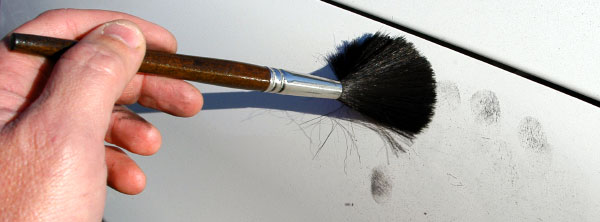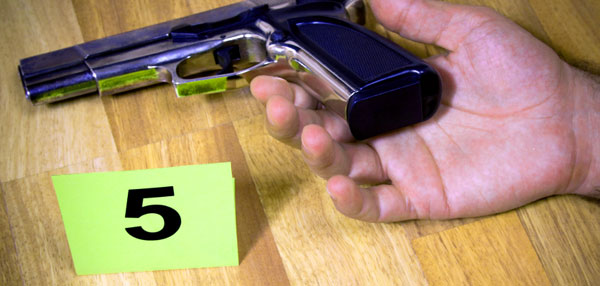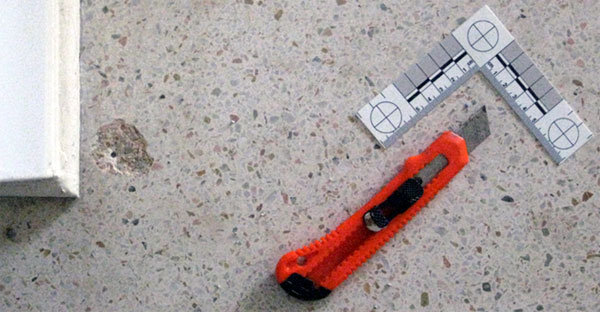Principles of Crime Scene Investigation
The key principle underlying crime scene investigation is a concept that has become known as Locard’s Exchange Principle. It states that whenever someone enters or exits an environment, something physical is added to and removed from the scene. This principle is generally summed up by stating: “Every contact leaves a trace.”

The logic behind this principle allows investigators to link suspects to victims, to physical objects, and to scenes. Any evidence that can link a person to the scene is referred to as associative evidence. This may include items such as fingerprints, blood and bodily fluids, weapons, hair, fibers and the like. This type of evidence answers the question “Who did this?”
While associative evidence links people to the place of the crime, reconstructive evidence allows investigators to gain an understanding of the actions that took place at the scene. A broken window, a blood spatter pattern, bullet paths and shoe prints can all reveal what actually happened. This type of evidence answers the question, “How did it happen?”
To help establish the linkage of people and things to a scene, the investigator may also collect known substances, called control samples. These can be items such as fibers from carpeting at the scene, glass fragments, soil, vegetation and other trace evidence. Learn more about trace evidence ▸ If these are found on the suspect’s clothing, in their vehicle or at their residence, it could provide circumstantial evidence linking the person to the scene.
For example, police are called to a residential neighborhood where a home invasion and burglary has just occurred. Investigators collect glass fragments from a shattered cabinet door with a distinct pattern etched into the glass. A tip leads investigators to a local man with a known history of burglary. Examination of the suspect’s clothing yields glass fragments with the same distinct pattern as the smashed cabinet doors.
Eliminating people who could not be the perpetrator is also important. Control samples of fingerprints and DNA are often collected from any person(s) who have access to the scene who are not considered suspects.
Gauging the Value of Evidence
It is unique - If an item is found that helps narrow the possibilities of who might be considered a suspect, or the manner in which a crime was committed, this evidence would be of use. Is an impression from a vehicle tire found in the dirt at the scene? The tread impression can be compared to others to determine the type of tire that was on the car. Is a shoe print left in the soil? The tread may help to identify the size and type of shoes it came from and the wear pattern could be used to match it to a specific pair. Learn more about footwear impressions and tire tracks ▸

It has a low probability of occurring by chance - Considering the mathematical probabilities will help to determine the odds that a piece of physical evidence found at the scene could appear merely by coincidence. If DNA evidence found at the scene matches a suspect, the chances are exceedingly low that another person could have left this sample. But even evidence that has a much higher probability—for instance, a common type of shoeprint that is left in the soil—is still valuable. When combined with other high probability evidence, these can help narrow the list of possible parties and build a compelling case.
It is inconsistent - If an item is found that is out of place or inconsistent with the setting, or is out of character for the victim—for instance if the victim was a non-smoker but a cigarette butt is found at the scene—this could be an important bit of evidence.

It is a physical match - If trace evidence is found on the suspect or in his possession that matches something at the scene, this makes this item valuable as evidence. For instance, broken plastic parts or a broken fingernail that can be matched by fracture marks can demonstrate that two pieces were once a part of the same item.